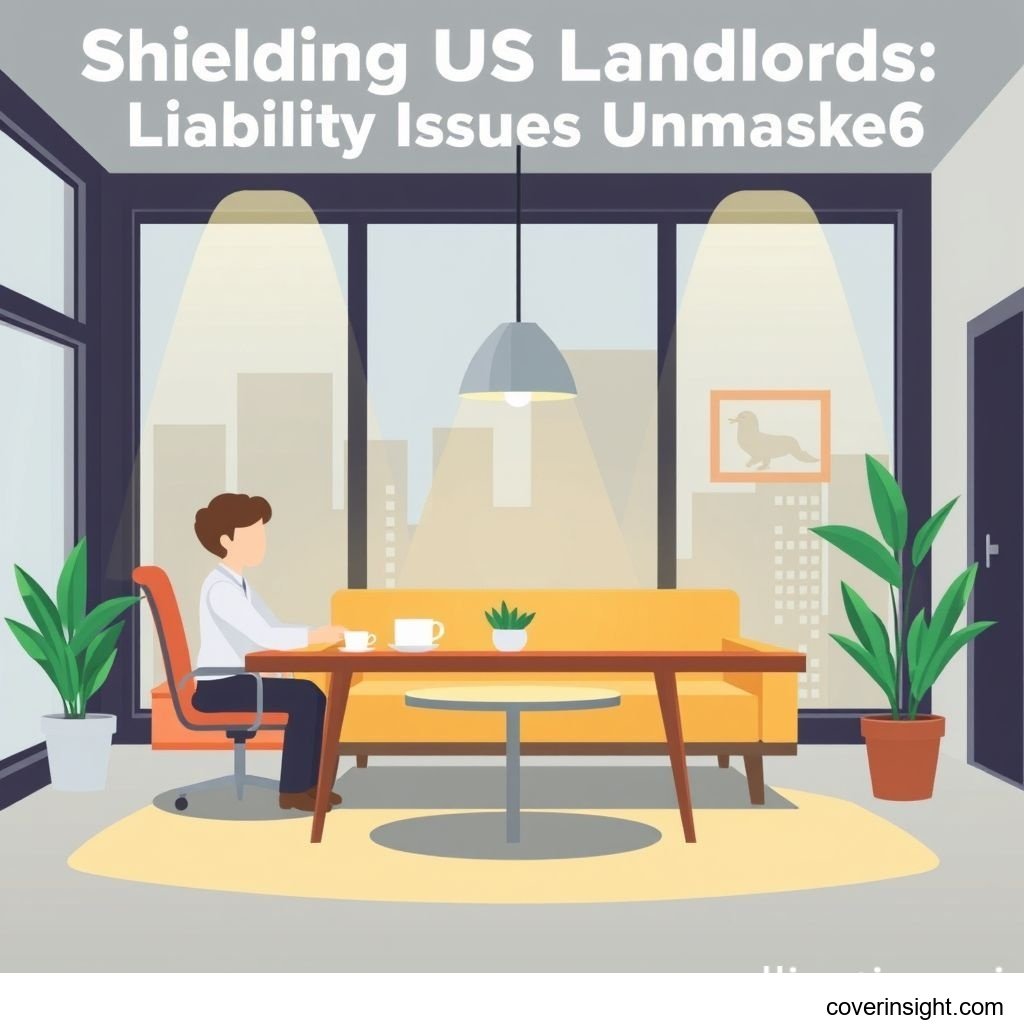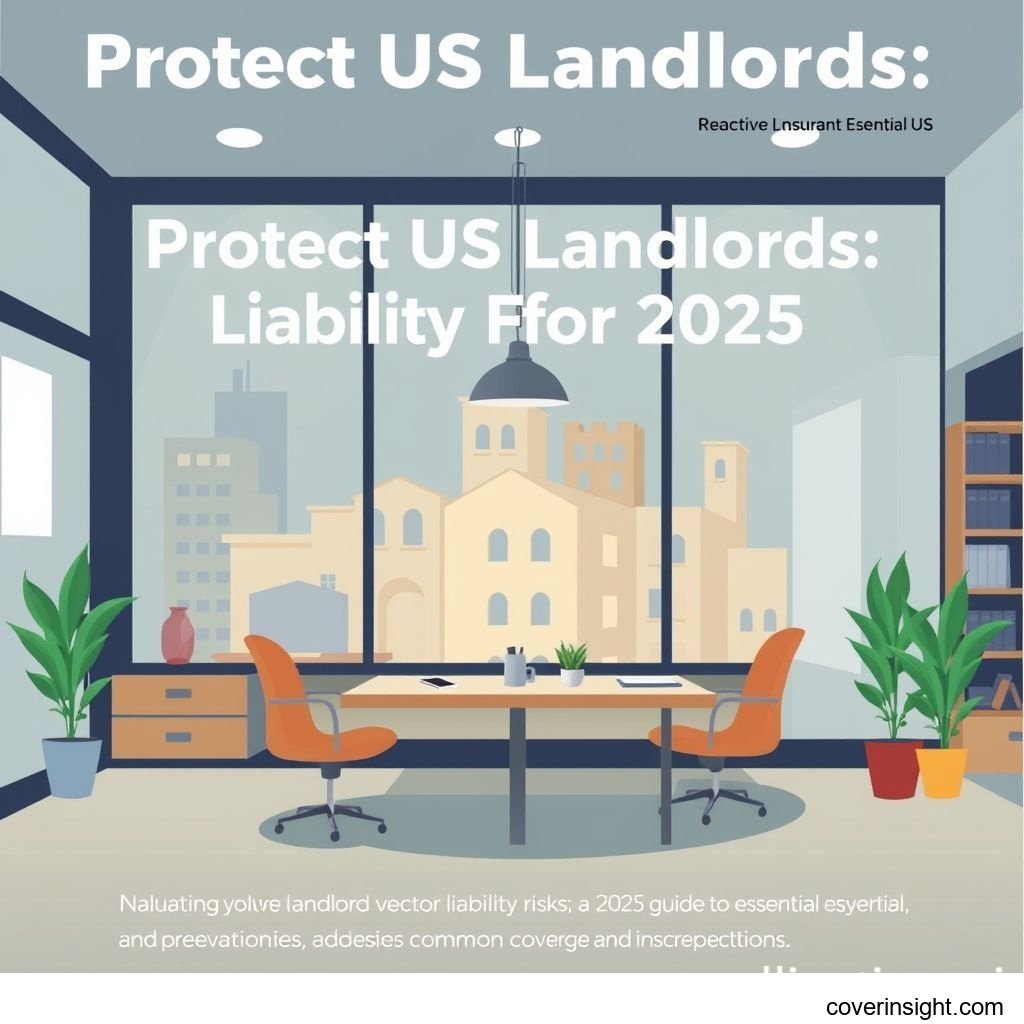Shielding US Landlords: Liability Issues Unmasked 2025
Introduction
In the dynamic landscape of real estate, understanding and managing landlord liability issues is paramount for property owners across the United States, especially as we navigate 2025. Landlords face a myriad of potential risks, from tenant injuries on their property to property damage caused by negligence, and even issues arising from perceived discrimination. Ignoring these risks isn't just risky business; it can lead to devastating financial consequences and legal battles that can quickly sour even the most lucrative investment. As laws and tenant protections evolve, staying ahead of the curve in mitigating these liabilities isn't just about compliance; it's about safeguarding your assets and ensuring peace of mind.
Coverage Details
Navigating the complexities of landlord liability often begins with robust insurance coverage. This isn't a one-size-fits-all solution, but rather a tailored approach to protect against the unique hazards of property ownership.
What’s Included
Typically, a comprehensive landlord insurance policy, particularly its liability component, offers a broad spectrum of protection. This usually includes coverage for bodily injury to a tenant or guest that occurs on your property due to your negligence. For instance, if a tenant slips on a loose stair tread that you, as the landlord, failed to repair after being notified, the policy could cover their medical expenses and legal fees if they sue. It also extends to property damage, such as a burst pipe that damages a tenant's belongings, or even wrongful eviction claims. Some policies might also cover libel or slander in specific contexts related to the property. Think of it as your financial shield, allowing you to breathe a bit easier knowing that unexpected events won't leave you in a financial lurch. For a broader understanding of how such protections fit into a global context, you might explore various [Insurance Resources Global].
Common Exclusions
While robust, landlord liability policies aren't a magic wand. Common exclusions often include damages or injuries resulting from intentional acts committed by the landlord. For example, if you intentionally cause harm or damage, your policy won't step in. Wear and tear, pest infestations (unless directly caused by landlord negligence or included as an add-on), and damage from floods or earthquakes are typically excluded and require separate, specialized policies. Furthermore, property damage caused by the tenant themselves, or liability arising from business operations not directly related to the rental property, generally won't be covered. It's crucial to read the fine print and understand these limitations, as "what you don't know can hurt you," especially when facing a lawsuit.
Cost Analysis
The cost of landlord liability coverage isn't static; it's influenced by several moving parts, much like the US housing market itself.
Price Factors
Premiums are determined by a cocktail of factors. The location of your property plays a significant role; states or cities with higher litigation rates or specific tenant protection laws might see higher premiums. The type of property matters too – a multi-unit apartment complex generally poses more liability risks than a single-family home. The age and condition of the property are also key; older properties with outdated systems (like wiring or plumbing) might be considered higher risk. Your claims history, the level of coverage you choose, and even your deductible will all impact the final price tag. For a detailed breakdown of state-specific factors, checking with your [State Insurance Departments] can be incredibly insightful.
Saving Tips
When it comes to cutting costs, a penny saved is a penny earned. Bundling your landlord policy with other insurance, like your personal home or auto insurance, often unlocks discounts. Increasing your deductible is another common strategy, though it means you'll pay more out-of-pocket if a claim arises. Implementing safety measures like installing smoke detectors, carbon monoxide detectors, and ensuring regular property maintenance (e.g., keeping walkways clear, promptly addressing repair requests) can also signal lower risk to insurers, potentially leading to lower premiums. Proactive landlords who invest in property upkeep often find themselves in a better position not just legally, but financially as well. Exploring general tips for managing insurance costs can often be found at [US Insurance Home].
FAQs
How much does landlord liability insurance cost? The cost varies widely, typically ranging from a few hundred dollars to several thousand per year, depending on the factors mentioned above (location, property type, coverage limits, etc.). It’s best to get multiple quotes.
What affects premiums? Key factors include property location, type and age of the property, claims history, chosen coverage limits, deductibles, and implemented safety features.
Is it mandatory? While landlord liability insurance isn't federally mandated, it is highly recommended, and many lenders require it as a condition for a mortgage. Some states or municipalities might have specific requirements for certain types of rental properties. For general guidance on insurance regulations, the [National Association of Insurance Commissioners] is a great resource.
How to choose the right policy? Assess your risk tolerance, the value of your property, and potential financial exposure. Compare quotes from several reputable providers, paying close attention to coverage limits, exclusions, and deductibles. Don't hesitate to consult with an experienced insurance agent.
Consequences of no coverage? Operating without adequate coverage is like walking on eggshells. A single serious incident, such as a slip-and-fall leading to a severe injury, could result in medical bills, legal fees, and settlement costs that quickly run into the hundreds of thousands, or even millions, of dollars. This could jeopardize your personal assets, including your home and savings, and even lead to bankruptcy. The financial fallout can be immense, and it’s a gamble simply not worth taking. While this doesn't directly relate to landlord insurance, understanding the broader implications of health and safety, which is often a component of landlord responsibility, can be explored through general health resources like [Healthcare.gov].
Local Insight & Real-World Example: In 2023, data from the California Department of Fair Employment and Housing (now Civil Rights Department) showed a consistent number of housing discrimination complaints, highlighting the ongoing legal vulnerabilities landlords face beyond just physical injuries. Landlords must navigate federal and state fair housing laws carefully. A recent case in Philadelphia illustrates this perfectly: a landlord faced significant penalties in 2024 after a tenant successfully sued for injuries sustained due to a neglected plumbing issue that led to persistent mold. The court found the landlord negligent for failing to address repeated repair requests, resulting in not only direct medical costs for the tenant but also punitive damages and legal fees for the landlord that far exceeded any potential insurance premium. This case underscores the reality that maintaining safe and habitable conditions isn't just good practice; it's a legal imperative with real financial teeth.
Author Insight & Experience: Based on my experience living in the US and observing the evolving landscape of real estate, the narrative around landlord liability is shifting. Gone are the days when a handshake and a loose understanding of property maintenance sufficed. Tenants are increasingly aware of their rights, and the legal framework is becoming more robust in protecting them. As someone who has seen the devastating impact of an unforeseen lawsuit, I firmly believe that comprehensive liability coverage isn't an option; it's a fundamental pillar of responsible property ownership. It provides not just financial protection, but genuine peace of mind, allowing landlords to focus on the growth and management of their investments without constantly looking over their shoulder. Don't wait until you're in hot water to secure your umbrella.








Comments